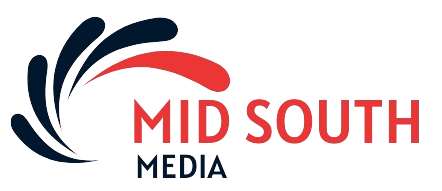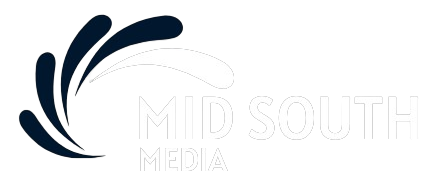
One of the country’s richest nonprofits focused on online education has been giving out grants for more than a year. But so far, the group, known as Axim Collaborative, has done so slowly — and pretty quietly.
“There has been little buzz about them in digital learning circles,” says Russ Poulin, executive director of WCET, a nonprofit focused on digital learning in higher education. “They are not absent from the conversation, but their name is not raised very often.”
Late last month, an article in the online course review site Class Central put it more starkly, calling the promise of the nonprofit “hollow.” The op-ed, by longtime online education watcher Dhawal Shah, noted that according to the group’s most recent tax return, Axim is sitting on $735 million and had expenses of just $9 million in tax year 2023, with $15 million in revenue from investment income. “Instead of being an innovator, Axim Collaborative seems to be a non-entity in the edtech space, its promises of innovation and equity advancement largely unfulfilled,” Shah wrote.
The group was formed with the money made when Harvard University and MIT sold their edX online platform to for-profit company 2U in 2021 for about $800 million. At the time many online learning leaders criticized the move, since edX had long touted its nonprofit status as differentiating it from competitors like Coursera. The purchase did not end up working out as planned for 2U, which this summer filed for bankruptcy.
So what is Axim investing in? And what are its future plans?
EdSurge reached out to Axim’s CEO, Stephanie Khurana, to get an update.
Not surprisingly, she pushed back on the idea that the group is not doing much.
“We’ve launched 18 partnerships over the past year,” she says, noting that many grants Axim has awarded were issued since its most recent tax return was filed. “It’s a start, and it’s seeding a lot of innovations. And that to me is very powerful.”
One of the projects she says she is most proud of is Axim’s work with HBCUv, a collaboration by several historically Black colleges to create a shared technology platform and framework to share online courses across their campuses. While money was part of that, Khurana says she is also proud of the work her group did helping set up a course-sharing framework. Axim also plans to lend a hand with “incorporating student success metrics in the platform itself,” she says, “so people can see where they might be able to support students with different kinds of advising and different kinds of student supports.”
The example embodies the group’s philosophy of trying to provide expertise and convening power, rather than just cash, to lend a hand promising ideas scale to support underserved learners in higher education.
Listening Tour
When EdSurge talked with Khurana last year, she stressed that her first step would be to listen and learn across the online learning community to see where the group could best make a difference.
One thing that struck her as she did that, she says, is “hearing what barriers students are facing, and what’s keeping them from persisting through their programs and finding jobs that match with their skills and being able to actually realize better outcomes.”
Grant amounts the group has given out so far range from around $500,000 for what she called “demonstration projects” to as much as $3 million.
Artificial intelligence has emerged as a key focus of Axim’s work, though Khurana says the group is treading gingerly.
“We are looking very carefully at how and where AI is beneficial, and where it might be problematic, especially for these underserved learners,” she says. “And so trying to be clear-eyed about what those possibilities are, and then bring to bear the most promising opportunities for the students and institutions that we’re supporting.”
One specific AI project the group has supported is a collaboration between Axim, Campus Evolve, University of Central Florida and Indiana Tech to explore research-based approaches to using AI to improve student advising. “They’re developing an AI tool to have a student-facing approach to understanding, ‘What are my academic resources? What are career-based resources?,’” she says. “A lot of times those are hard to discern.”
Another key work of Axim involves keeping up an aged system rather than starting fresh ones. The Axim Collaborative manages the Open edX platform, the open-source system that hosts edX courses and can also be used by any institution with the tech know-how and the computer servers to run it. The platform is used by thousands of colleges and organizations around the world, including a growing number of governments, who employ it to offer online courses.
Anant Agarwal, who helped found edX and now works at 2U to coordinate its employ, is also on a technical committee for Open edX.
He says the structure of supporting Open edX through Axim is modeled on the way the Linux open-source operating system is managed.
While edX continues to rely on the platform, the software is community-run. “There has to be somebody that maintains the repositories, maintains the release schedule and provides funding for certain projects,” Agarwal says. And that group is now Axim.
When the war in Ukraine broke out, Agarwal says, the country “turned on a dime and the universities and schools started offering courses on Open edX.”
Poulin, of WCET, says that it’s too early to say whether Axim’s model is working.
“While their profile and impact may not be great to this point, I am willing to give startups some runway time to determine if they will take off,” he says, noting that “Axim is, essentially, still a startup.”
His advice: “A creative, philanthropic organization should take some risks if they are working in the ‘innovation’ sphere. We learn as much from failures as successes.”
For Khurana, Axim’s CEO, the goal is not to find a magic answer to deep-seated problems facing higher education.
“I know some people want something that will be a silver bullet,” she says. “And I think it’s just hard to come by in a space where there’s a lot of different ways to solve problems. Starting with people on the ground who are doing the work — [with] humility — is probably one of the best ways to seed innovations and to start.”

